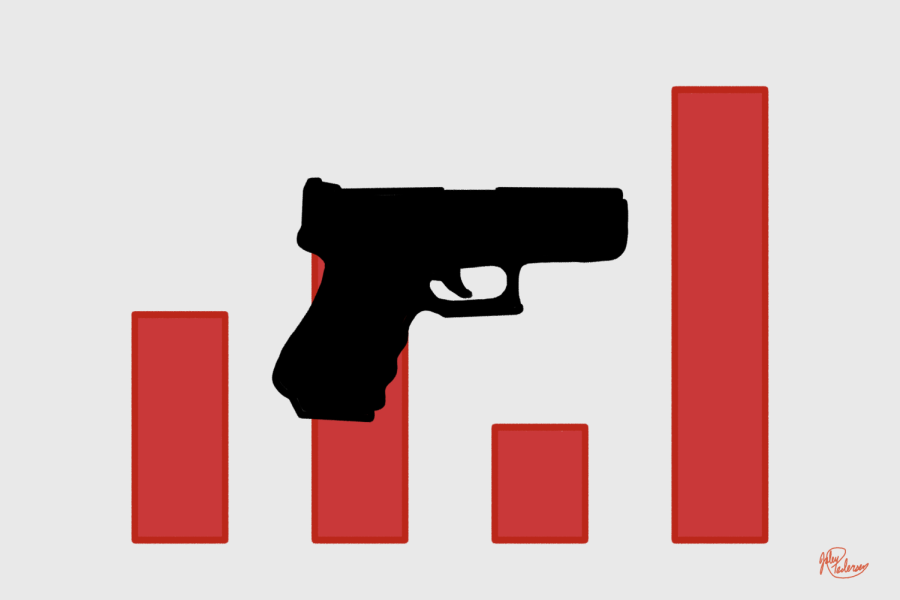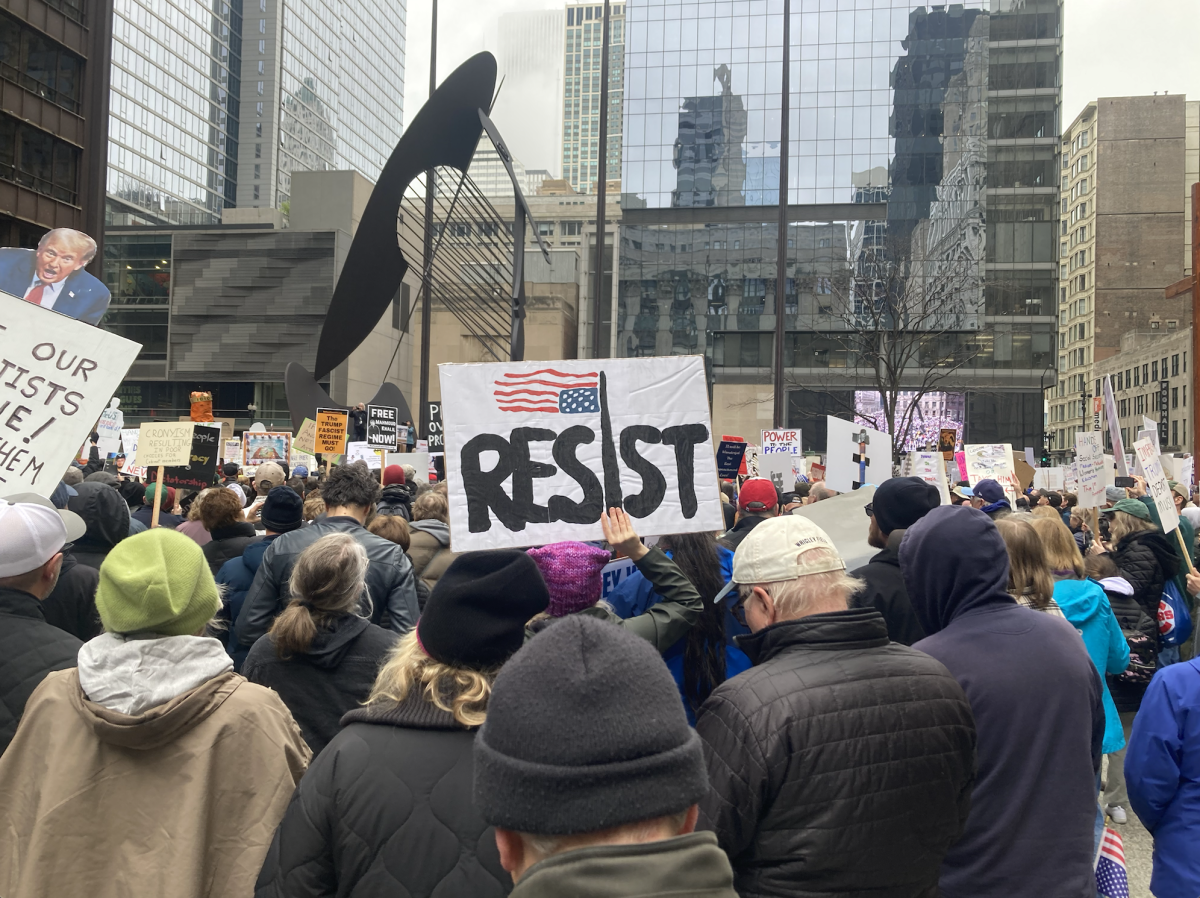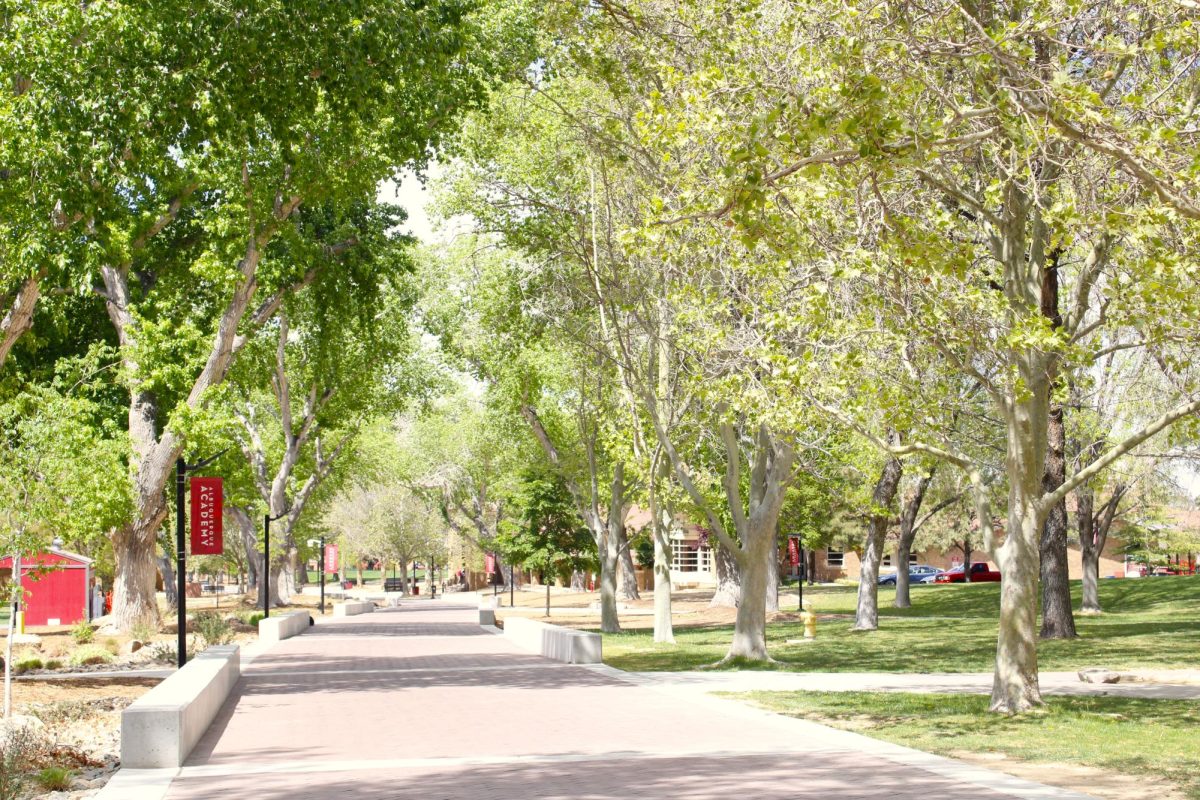School shootings are one of the most salient issues of the 21st century, but the federal government continues to leave parents, community members, educators, and students feeling unseen and betrayed. In the absence of serious efforts to counter gun violence from Congress, school districts around the country are turning to themselves for solutions. As the government’s incapacity to make any meaningful gun control progress becomes more and more obvious with each round of crocodile tears and “thoughts and prayers,” schools are addressing the issue in their own ways.
Without any federal guidance, much less a standard or precedence to follow, school and district policies vary widely and come with diverse consequences. An increasingly popular solution involves bringing more firearms to school campuses. After all, if the National Rifle Association has taught us nothing else, “the only way to stop a bad guy with a gun is a good guy with a gun.” The national movement to arm campuses takes two forms. The more mainstream solution involves placing armed security or police officers on campus.
This approach has drawn a variety of reactions, ironically raising questions about the safety of students. An officer in Farmington, New Mexico, for example, made national news in 2019 after a video revealed him using “excessive force” on an 11 year-old girl, leading to his resignation. Incidents like these brought scrutiny to the system for its implications on racial inequality and the “school-to-prison pipeline” – a long-standing structural theory describing the “policies and practices that push [the US]’s schoolchildren, especially [the] most at-risk children, out of classrooms and into the juvenile and criminal justice systems,” according to the American Civil Liberties Union. Amid the outrage surrounding the murder of George Floyd and racialized police violence, many school districts threw out the idea of having a police presence in schools, citing this disturbing trend towards the criminalization of students, especially regarding minor offenses, such as fighting, which would traditionally be handled by school administrators rather than the juvenile justice system. But this surge towards more progressive solutions didn’t last long. With a record number of school shootings in 2022 and concerns around campus violence rising throughout 2022 and 2023, many districts renewed the militarization of their schools with armed security or resource officers.
Even with the reinvestment into armed police or security on campus, shootings did not disappear. 2022 was the most violent year for school shootings since at least 1999, and they’ve remained high. Nonetheless, having police present on school campuses is popular among a number of politicians, teachers, and parents, who worry about violence – both gun-related and otherwise.
This disposition, however, lacks empirical backing. While the presence of armed officers on campuses might give people a greater sense of security, there is little evidence to back their efficacy and even some implications of negative consequences of having armed security in the case of a school shooting. Of course, there are the publicized cases of student resource officers or police standing by during an emergency, such as the authorities in Uvalde, Texas. In another instance, Scot Peterson, an armed resource officer, faced numerous charges after fleeing from the scene of Marjory Stoneman Douglas High School during the Parkland, Florida, shooting. A study authored by Jillian Peterson, James Densley, and Gina Erickson, however, expands the inquiry of officers’ efficacy in preventing deaths and injuries during active shooter events. Their analysis reveals a story which complicates the unsupported causation between greater resource officer presence and decreased threat from school shooters. By examining 133 active or attempted school shooter incidents between 1980 and 2019, the study indicated that while an armed guard was present in nearly one in every four of all incidents, “the rate of deaths was 2.83 times greater in schools with an armed guard present.” Contrary to popular opinion, this study, and a growing body of literature, demonstrates that many school districts may be approaching the issue from the wrong perspective.
A more radical approach to preventing school shootings, but one which has gained traction as school shootings appear to be an ever-greater challenge to student safety, is arming teachers. Immediately, this raises serious concerns about experience. If deaths are nearly three times more likely in school shootings with a trained security guard present, how does that reflect upon minimally-trained educators doing the same job? Evidence indicates that teachers – having less training (as low as 24 hours in Ohio) – would be more prone to make mistakes than the already mistake-prone security operatives. A 2008 study found that even highly-qualified New York City police officers only hit their target about 18% of the time.
Although school resource officers have come under scrutiny from pro-gun advocates as well as from gun reformists for a variety of reasons, the solution identified by the gun rights community was, of course, not a restriction on guns but rather arming educators.
Anecdotal evidence provides conflicting accounts on the desirability of having armed teachers. Prior even to the shooting in Uvalde, Texas, the practice of arming teachers and administrators at school was growing in popularity in rural towns. These towns could not depend on a quick response time from police and could not afford to keep a police officer on campus, leading them to turn to arming teachers, such as the small town of Utopia, Texas. In Utopia, arming teachers, although so far untested in a critical scenario, was welcomed by the townsfolk with open arms, or perhaps I should say bear arms. When Uvalde took place, gun rights advocates sought an expansion of this system, with a variety of states taking similar approaches. The National Conference of State Legislatures reports that, as of June 2023, at least nine states specifically exempt educators from firearm bans on K-12 campuses, and there are others which permit school employees to carry firearms with varying levels of experience and requirements.
Polls indicate that, while a large portion of politicians and parents may wish for educators to be armed, those who would actually carry the weapons show less enthusiasm. The largest teachers’ union in the United States, the National Education Association, publicly rejected arming teachers, and the majority of teachers across the country carry the same sentiment. A RAND Corporation survey from 2023 found that a majority of teachers across almost every demographic believe that arming teachers would make schools less safe, and only about 20% of educators believe arming teachers would make schools safer. As in the instance of Utopia, Texas, the RAND poll indicates that teachers from rural school districts are more likely to support arming teachers, while those in urban and suburban districts are about 20 percentage points more likely to feel less safe if teachers are armed. The same survey estimates that about 20% of teachers would be interested in arming themselves if their school district allowed it.
Arming teachers presents further challenges and risks outside of active shooter situations. The risk of students gaining access to firearms held by teachers, either because a teacher misplaced or dropped the weapon or because a student stole it from the teacher, presents another real concern, while accidental discharge of weapons compounds the issue.
In the face of evidence, defending the presence of firearms on campus as a means to prevent school shootings or reduce casualties in the case of one falls short. Even claims about deterrence seem to fall flat in the face of the demographics of those committing acts of violence in this way. The majority of school shooters are under or near the age of 18, an age group of shooters most likely to have suicidal tendencies and thus feel less concerned about armed opposition. Nonetheless, schools, politicians, parents, students, and teachers are all trying to find the best way to approach school shootings and keep kids safe. We’re all wondering what the answer could be, and our lives may depend on it.
School Safety: More Guns, More Safe?
Darin Eberhardt ’25, Opinion, News, and Features Editor
February 26, 2024
2
Tags:
More to Discover
About the Contributor

Darin Eberhardt ’25, Opinion, News, and Features Editor
Darin Eberhardt ’25 has been working with the Advocate since 7th grade and joined the Editorial Board in early 2023. Always finding ways to keep his schedule near the brink of overload, Darin is a twice elected student senator (there’s no conflict of interest, he swears); he is also a member of the Academy debate team, where he gained his love for rhetoric in all its forms. Darin’s Palestinian heritage helped him learn to develop conviction paired with open-mindedness in his opinions. Darin treats each of his articles as an exploration into the nuances in issues that matter, treating every story as a new learning opportunity. His belief in the best of others inspires Darin to look beyond first impressions and search for what makes us all human. When he isn’t engaged in extracurriculars, Darin enjoys tennis with his dad and plays with his two dogs.














